Two World Firsts: Move and Installation for HP Print Press
HP is a global technology company that specialises in manufacturing personal systems, 3D printers and industrial digital presses for businesses...
We're actively recruiting for a range of roles across sales, engineering, IT and warehouse. Check our careers page to see open positions including apprenticeships.

Whether you’re moving a single piece of equipment or an entire production line, our trusted team of engineers can support every step of your move, from rigging to end-to-end relocation support across the globe.

4 min read
Admin Apr 9, 2024 8:31:32 AM
Ever installed a 12m-long press through a third-storey window? We have.
In early 2023, a prospective customer based in the US approached HP to purchase the PageWide Web Press T250 HD and other essential equipment.
We’ve been HP’s equipment partners since 2011. As part of that, we regularly work alongside them to move, install and set up HP presses in locations worldwide.
We also successfully performed the first-ever real-world installation of the T250 back in 2021, adding to and enriching the installation documentation (which was initially based on just theory) and achieving two world firsts in the process. So, we had significant knowledge of and experience with moving and installing this particular press.
However, there was a challenge. Access to the client’s building was prohibitive. And the only viable access to the print room was via a third-storey window, which sat around 4ft above the floor of the room.
We were tasked with, first, determining if and how it was possible—this would be the first time a piece of equipment of this kind would be installed on a third storey in US history. And second, working alongside and supporting HP to carry out the move, installation and validation.
We’d already achieved two world firsts with HP. Here’s the story of how we achieved a US first.
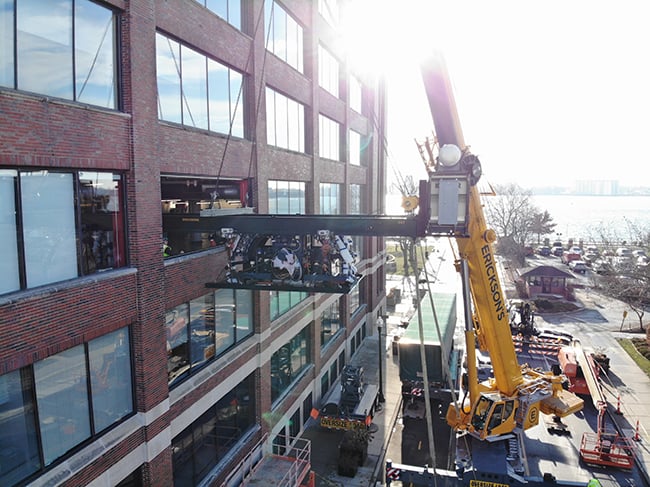
At the start of the project, we’d been made aware that the customer’s building had:
And that the only viable access to the print room was via a third-storey window that sat 4ft above the floor of the room.
However, a site visit in February with the owner of a local crane company (whom we’d hand-selected based on their expertise), as well as a second site visit in October once contracts had been signed, uncovered a host of other challenges.
First, the ceiling height within the print room was lower than ideal for some of the build activities. The floor loading also wouldn’t accept a forklift (even if we could get one into the building) and there was a plethora of pipes and ductwork in the ceiling area that would restrict our access further.
The second site survey found that the working area in the building and the height of our aperture had been reduced, additional facilities had been placed into the ceiling area and our clearance through the window was calculated as tight—but still possible.
So, we formulated a plan to help us overcome these obstacles. We would:
Here’s how we worked alongside HP to make it happen.
We set the start date for the crane activity for November 30th to avoid inconveniencing the public with road closures during the Thanksgiving holiday.
However, planning to move a high-value press through a third-storey window at the start of winter had given us a whole new factor to consider: the weather.
While the weather on the first allocated crane day was forecast to be cold—but dry—the second day would see torrential rain.
All of the preparatory work for the project had been actioned. So, our team mobilised, and the project started.
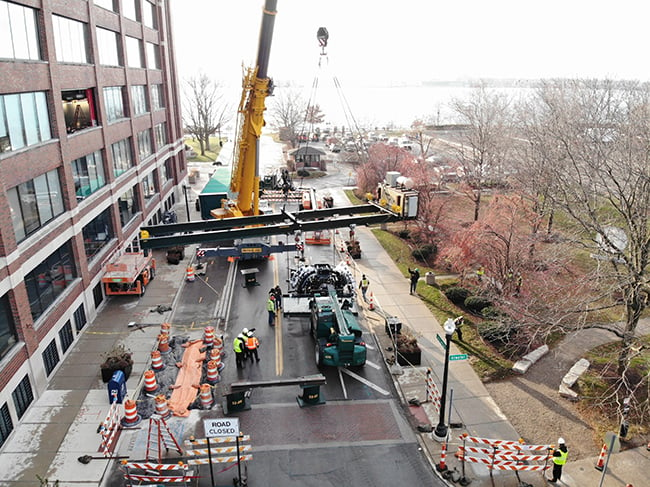
We received all units into the warehouse and loaded them onto the trucks, as planned. The crane was then set up, with road closures in place. The customer had also fulfilled their responsibility of removing the window and frame, with a temporary covering at the ready.
The print engine module (PEM) entered the building as planned, alongside other pieces of equipment.
The move had started well. Until it became apparent that there were issues with the hoist motors on the cantilever beam system.
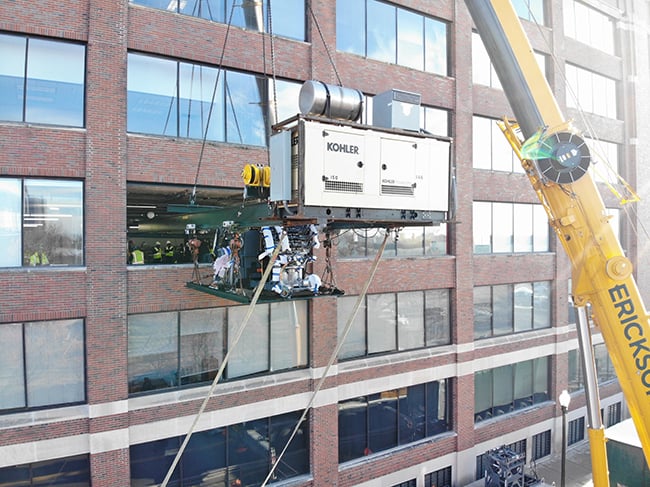
To deal with this, we needed to reduce the weight of the loads we were adding to the lift plate and increase the number of overall lifts, which pushed crane activity on until midnight.
By the end of the day, our team was exhausted, but we reached our goal. However, the worsening weather was yet to come.
As forecast, it rained on the second day of crane activity.
While unpleasant, thankfully it was not torrential. However, we needed to keep equipment as dry as possible during the move, while keeping rainwater out of the building.
We’d purchased additional polythene to wrap the equipment to protect it against rainwater damage, and inserted some pieces of equipment through the window still in their packaging for additional protection.
The downside was that this meant we had to scramble to get items unpacked inside the room, as all packaging needed to go back out of the window before the crane was dismounted.
In some cases, we also had to come up with creative ways to remove units from their bases in the restricted space we were working in.
Day two drew to a close at 8 pm with all items inside the room. However, we’d used every inch of laydown space, making it an extremely tight fit.
The team hit their usual stride over the following days with the build and assembly of the press.
However, we ran into a few more challenges along the way.
First, the positioning of the press was determined by the static floor loading requirements. But this meant that it was close to two large pillars.
The PEM doors also would not fully open. This meant the positioning of the electrical cabinet wouldn’t have set it up to code.
Our team brainstormed several adjustments and creative solutions to solve this challenge, discussing them with HP project managers, technical teams and the customer. Until we were able to action an inventive solution that solved the issue entirely.
The build continued into the integration phase and paper run. We finished by completing validation testing to ensure the tool was fully functional, before handing it over to a very happy customer.
We’ve been helping prestigious manufacturers like HP, Heidelberg and Komori move and install complex digital printing presses since 1991.
From single print press moves to large-scale projects, our start-to-finish turnkey service covers every step of your project.
Learn more about our equipment moves and installation service for digital printing equipment here.
Stay up to date with the latest news and resources from our experts.
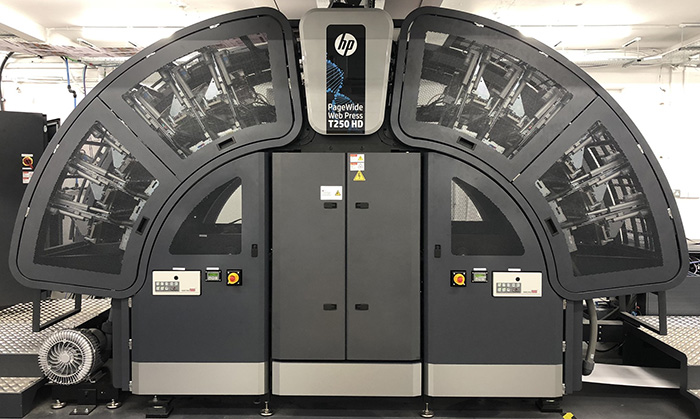
HP is a global technology company that specialises in manufacturing personal systems, 3D printers and industrial digital presses for businesses...
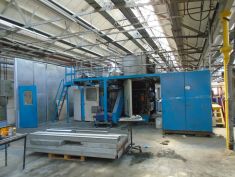
CPI is one of the UK’s leading printers of books. This print relocation project involved the complete dismantling of two presses; one in working...
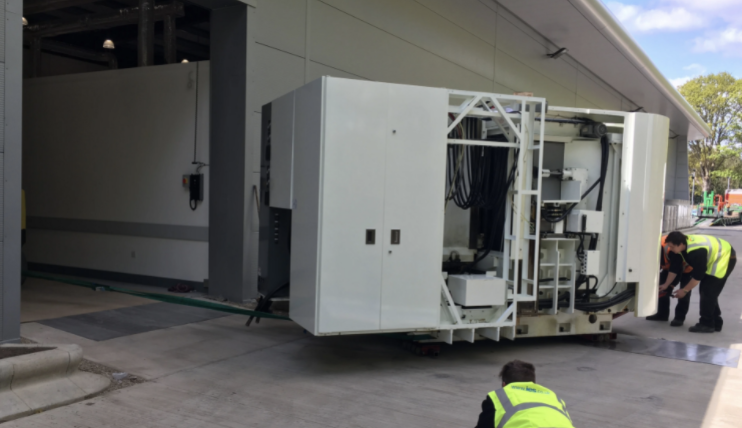
Established in 1958, Vision Engineering Ltd has become one of the world's most innovative and dynamic microscope manufacturers. They have offices...